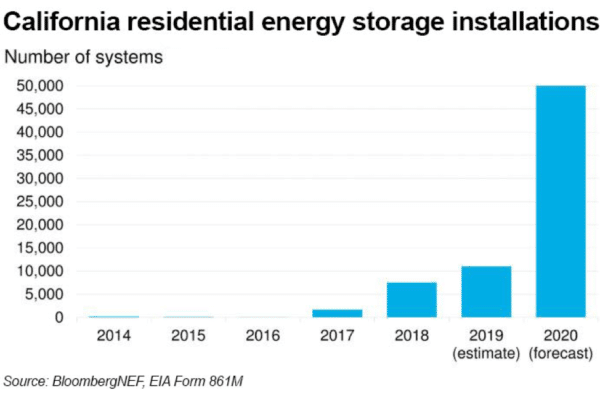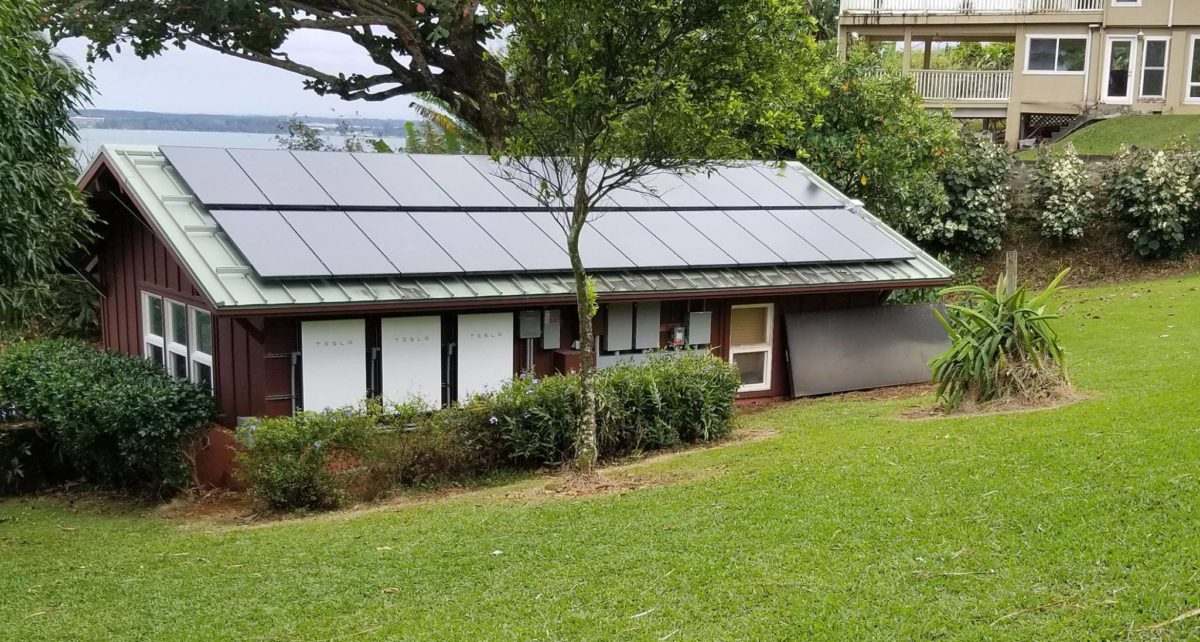BNEF expects the California residential battery market to explode this year.
Driven by plunging prices and the threat of power cut-offs in California, BNEF claims that customers installing solar are “willing to pay a premium to add storage for backup.”
BNEF expects 50,000 residential battery systems to be installed this year — up from the 19,000 California homes that had batteries in 2019.
As SunPower CEO Tom Werner said in a recent pv magazine interview, “It’s our belief that most solar systems will have storage — and it’s not that far away.”
Werner attributes the growth to PG&E’s Planned Safety Power Shutoff, along with the cost of storage coming down.
Brent Willson, the CEO of battery startup NeoVolta, sees residential energy storage growth in Southern California spurred by increases in Tier-1 pricing for consumers and “anti-solar” time-of-use pricing.
Sunrun has storage attach rates of 40-plus-percent in California.
Marco Mangelsdorf, a solar installer in Hawaii, said 70% of new solar customers are requesting storage — up from 60% last year.

BNEF suggests that homeowners “will need a large battery in order to keep power during long outages.”
Solar and storage companies such as Tesla, sonnen, LG, Sunrun, Vivint and SunPower are going to be the beneficiary of this anticipated growth.
California solar installer, Barry Cinnamon, said, “I kind of compliment PG&E because they’re our best marketing department when it comes to battery storage. Now the challenge is there’s a very limited number of battery storage systems that are going to meet the reliability threshold.”
This content is protected by copyright and may not be reused. If you want to cooperate with us and would like to reuse some of our content, please contact: editors@pv-magazine.com.








I can see a move for home owners to go towards larger battery storage units and perhaps what is considered a small commercial micro-grid now. A 25kWp to 30kWp solar PV array with around 100kWh to 150kWh of battery storage available, using maybe a 25kW three phase inverter with 480 three phase to 240 VAC for the typical home’s C.B. panel. Most folks would have the high start surge capability of a 25kW inverter combined with power curtailment when running nominal power on the circuit. If these prices keep coming down, and the technology keeps getting better, as in replacement of the popular IGBT drivers with SiC switching transistors, one can have a more robust, higher current handling inverter with longer life specifications with little additional hardware required in the price of the package.